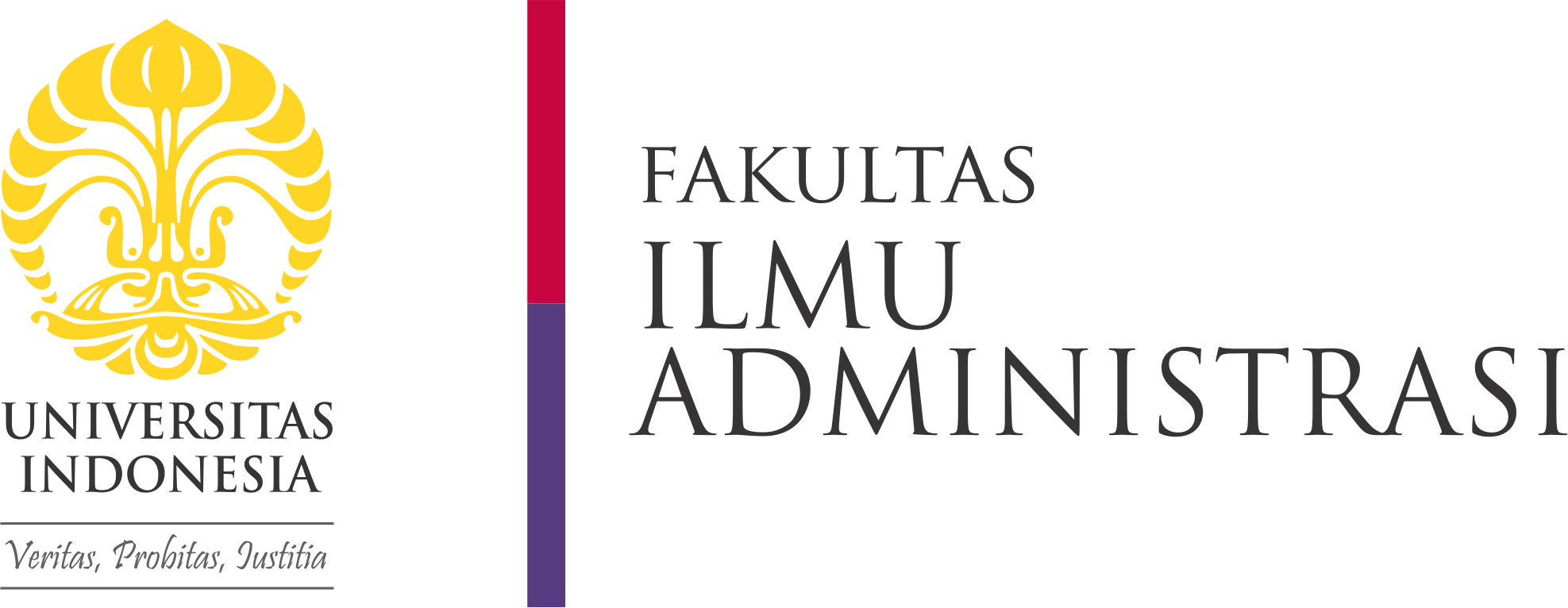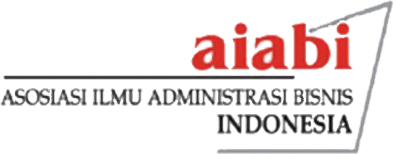Creative Commons License

This work is licensed under a Creative Commons Attribution-Share Alike 4.0 International License.
Abstract
Leading a university is generally more complex than a business organization, as the situation requires the presence of a leader who not only meets the criteria but is also willing to lead, a very rarely found combination in universities. Interestingly, although it is not easy to find academics with such qualities, these people still exist because they see the importance of leading for the survival of the organization. Therefore, it becomes interesting to understand how they ascribe meaning to their leadership amid the difficulties they must deal with. This study was conducted using in-depth interviews with 13 academic leaders to ascertain how they ascribe meaning to their leadership. The results of the interviews were then analyzed using the Atlas.ti 8 software. Four interpretive themes emerged from the interviews: (1) the many faces of university leaders; (2) community leadership style; (3) knowledge development and non-profit oriented leadership mission; and (4) corporate leadership.
Bahasa Abstract
Memimpin universitas secara umum lebih kompleks dibandingkan organisasi bisnis. Situasi ini mempersyaratkan kehadiran seorang pemimpin yang tidak hanya memenuhi kriteria namun juga bersedia memimpin, suatu kombinasi yang tidak mudah ditemukan di universitas. Menariknya meskipun tidak mudah menemukan para akademisi semacam ini, orang-orang tersebut masih ada dikarenakan melihat peran penting memimpin bagi keberlangsungan organisasi. Oleh karena itu menjadi menarik memahami bagaimana pemaknaan mereka terhadap kepemimpinannya di tengah berbagai macam kompleksitas yang perlu dihadapi. Studi ini dilakukan dengan wawancara mendalam terhadap 13 orang pemimpin akademik untuk menggali pemaknaan tersebut. Hasil wawancara kemudian dianalisis secara grounded dengan menggunakan software Atlas.ti 8. Empat tema pemaknaan mengemuka dari hasil wawancara yaitu: (1) beragam wajah pemimpin universitas; (2) gaya kepemimpinan komunitas; (3) misi kepemimpinan yang berorientasi pada pengembangan ilmu dan non-profit; dan (4) kepemimpinan korporasi.
References
Aboramadan, M., Dahleez, K., & Hamad, M.H. (2020). Servant leadership and academics outcomes in higher education: the role of job satisfaction. International Journal of Organizational Analysis. http://doi.org/10.1108/IJOA-11-2019-1923
Allen, L., Archer, T., & Makkai, T. (2013). Academic leadership: Succession planning: Final report. http://dx.doi.org/10.13140/RG.2.1.1993.6801
Andrade, M.S. (2018). A responsive higher education curriculum: Change and disruptive innovation. In D. Parish & J. Joyce-McCoach (Eds.), Innovations in higher education-cases on transforming and advancing practice. DOI: 10.5772/intechopen.80443
Andriani, D.E. (2007). Pengembangan sumber-sumber pendapatan perguruan tinggi [Development of higher Education sources of income]. Jurnal Manajemen Pendidikan, 2(3), 44-55.
Antoniuk, L., Kalenyuk, I., Tsyrkun O., & Sandul, M. (2019). Rankings in the higher education competitiveness management system. Problems and Perspectives in Management, 17(4), 325-339. http://dx.doi.org/10.21511/ppm.17(4).2019.27
Azra, A. (2008). Indonesian higher education: from public good to privatization. Journal of Asian Public Policy, 1(2), 139-147. http://dx.doi.org/10.1080/17516230802094411
Bass, B.M. (1990). From transactional to transformational leadership: learning to share the vision. Organizational Dynamics, 18(3), 19-31. https://doi.org/10.1016/0090-2616(90)90061-S
Bhargavi, S., & Yaseen, A. (2016). Leadership styles and organizational performance. Strategic Management Quarterly, 4, 87-117.
Bolden, R., Gosling, J., O’Brien, A., Peters, K., Ryan, M., Haslam, A., Longsworth, L., Davidovic, A., & Winklemann, K. (2012). Academic leadership: Changing conceptions, identities and experiences in UK higher education: Full report. Leadership Foundation for Higher Education. https://doi.org/10.13140/2.1.1957.6009
Brown, S.C. (2013). Change management in higher education: An empirical approach.
In L. Morris & C. Tsolokadis (Eds.), Proceedings of the International Conference on Information Communication Technologies in Education (pp. 89-98).
Bryman, A., & Lilley, S. (2009). Leadership researchers on leadership in Higher Education. Leadership, 5(3), 331-346. https://doi.org/10.1177/1742715009337764
Carlson, K. A., & Schneiter, S. (2011). Roles, responsibilities, and characteristics of nonprofit leadership. In K.A. Agard (Ed.), Leadership in nonprofit organizations: A reference handbook (pp. 329-336). SAGE Publications, Inc.
Compagnucci, L., & Spigarelli, F. (2020). The third mission of the university: A systematic literature review on potentials and constraints. Technological Forecasting & Social Change, 161, 1-30. https://doi.org/10.1016/j.techfore.2020.120284
Creswell, J. (2015). Educational Research: Planning, Conducting, and Evaluating Quantitative and Qualitative Research (5th ed). Pearson Education, Inc.
Creswell, J., & Poth, N. (2017). Qualitative inquiry and research design: Choosing among five approaches. SAGE Publications.
Crippen, C., & Willows, J. (2019). Connecting teacher leadership and servant leadership: A synergistic partnership. Journal of Leadership Education, 18(2), 171-178.
Daft, R.L. (2007). Organization theory and design (9th ed.). Thomson Learning, Inc.
Darvish, H., & Temelie, Z.N. (2014). A study on the relationship between succession planning and strategic planning. Case study: Payame Noor University of Aleshtar. Economic Insights-Trends and Challenges, 3(56), 11-24.
Ernø-Kjølhede, E., Husted, K., Mønsted, M., & Wenneberg, S.B. (2001). Managing university research in the triple helix: MWP Working Paper No. 13. Copenhagen Business School.
Fitri. (2010, August 21st). Seputar akreditasi BAN-PT [Information about accreditation from National Accreditation Agency for Higher Education]. https://lldikti12.ristekdikti.go.id/2010/08/21/seputar-akreditasi-ban-pt-2.html
Gmelch, W. (2015). The call for leadership: Why chairs serve, what they do, and how long they should serve. AKA Monographs: Leading and Managing the Kinesiology Department, 1(1), 1-12.
Hofstede, G., Hofstede, G.J., & Minkov, M. (2010). Cultures and Organizations, Software of the Mind: Intercultural Cooperation and Its Importance for Survival. McGraw-Hill.
House, M. (October, 2018). A career in organized anarchy: Building interpersonal relationship in higher education [Conference Session]. 2018 ACM SIGUCCS Annual Conference (SIGUCCS 18), Orlando, Florida, USA. https://doi.org/10.1145/3235715.3235733
Kantabutra, S. (2010). Vision effects: A critical gap in educational leadership research. International Journal of Educational Management 24(5), 376-390.
Klein, M.F., & Salk, R.J. (2013). Presidential succession planning: A qualitative study in private higher education. Journal of Leadership & Organizational Study, 20(3), 335-345. https://doi.org/10.1177/1548051813483836
Kligyte, G., & Barrie, S. (2014). Collegiality: leading us into fantasy – the paradoxical resilience of collegiality in academic leadership, Higher Education Research & Development, 33(1), 157-169, https://doi.org/10.1080/07294360.2013.864613
Kupriyanova V., Estermann T., Sabic N. (2018). Efficiency of universities: Drivers, enablers and limitations. In: Curaj A., Deca L., Pricopie R. (eds), European higher education area: The impact of past and future policies (pp 603-618). Springer. https://doi.org/10.1007/978-3-319-77407-7_36
Law of the Republic of Indonesia No. 12. (2012). https://unnes.ac.id/wp-content/uploads/uu-12-2012.pdf
Lowman, R.L. (2010). Leading the 21st-century college and university: Managing multiple missions and conflicts of interest in higher education. The Psychologist-Manager Journal, 13(4), 237–243.
Mainardes, E.W., Alves, H., & Raposo, M. (2011). The process of Change in University Management: From the “ivory tower” to entrepreneurialism. Transylvanian Review of Administrative Sciences, 7(33), 124-149.
Manning, K. (2018). Organizational theory in higher education (2nd edition). Routledge.
Markus, H. R., & Kitayama, S. (2010). Cultures and selves: A cycle of mutual constitution. Perspectives on Psychological Science, 5(4), 420–430.
McNamara, D.E. (2009). From Fayol’s mechanistic to today’s organic functions of management. American Journal of Business Education, 2(1), 63-78. https://files.eric.ed.gov/fulltext/EJ1052767.pdf
Middlehurst, R., Goreham, H., & Woodfield, S. (2009). Why research leadership in higher education? Exploring contributions from the UK's leadership foundation for higher education. Leadership, 5(3), 311-329.
Murniati, J., Panggabean, H., Tjitra, H., (2020). Dua sisi mata uang: Pemimpin dan perubahan [Two sides of the coin: Leader and change]. Elexmedia Komputindo.
Murphy, J. P. (2011). Theories of nonprofit and organizational leadership. In K.A. Agard (Ed.), Leadership in nonprofit organizations: A reference handbook., (pp. 295-302). SAGE Publications, Inc.
Pinheiro, R., & Young, M. (2017). The university as an adaptive resilient organization: A complex systems perspective. In J. Huisman & M. Tight (Eds.), Theory and Method in Higher Education Research (pp.119-136). https://doi.org/10.1108/S2056-375220170000003007
Pusdatin [Center for Data and Information]. (2018). Statistik pendidikan tinggi 2018 [2018 Higher education statistics]. Ministry of Research, Technology, and Higher Education, of the Republic of Indonesia.
Ruscio, K.P. (2016). Leadership in organized anarchy. Public Administration Review, 76(2), 219-220. https://doi.org/10.1111/puar.12536
Santoso, D. (2011, January 3). Tantangan perguruan tinggi dalam menghadapi dinamika global [Higher education challenges in dealing with the global dynamics] [Public Lecture]. 2011 Public Lecture, Universitas Muhammadiyah Malang (UMM), Malang, Indonesia. https://slideplayer.info/slide/2847435/
Sart, G. (2014). The new leadership model of university management for innovation and entrepreneurship. Eurasian Journal of Educational Research, 57, 73-90. https://files.eric.ed.gov/fulltext/EJ1056270.pdf
Smith, B.L. & Hugley, A.W. (2006). Leadership in higher education-its evolution and potential: A unique role facing critical challenges. Industry & Higher Education, 20(3), 157-163. https://doi.org/10.5367/000000006777690972
Spendlove, M. (2007). Competencies for effective leadership in higher education. International Journal of Educational Management, 21(5), 407-417. https://doi.org/10.1108/09513540710760183
Teece, D.J. (2017). Managing the university: Why “organized anarchy” is unacceptable in the age of massive open online courses. Strategic Organization 00(0), 1-11. https://doi.org/10.1177/1476127017732760
Teferra, D. (2014, July 18). ‘Organised anarchy’ – The enduring paradigm of university management. https://www.universityworldnews.com/post.php?story=20140716075612402
Thomas, A. (2018). Orientation in Cultural and Ethnic Diversity: The Concept of Cultural Standards. In A. Thomas, Cultural and Ethnic Diversity How European Psychologists Can Meet the Challenges (pp. 25-38). Hogrefe Publishing.
Wicaksono, T.Y., & Friawan, D. (2011). Recent developments in higher education in Indonesia: Issues and challenges. In S. Armstrong & B. Chapman, Financing higher education and economics development in East Asia (pp. 159-187). ANU Press.
Yosua, I. (2020). Faktor-faktor yang berpengaruh terhadap affective identity-motivation to lead (AI-MTL) para dosen di universitas X [Factors affecting affective-identity motivation to lead (AI-MTL) of lecturers in X university] (Unpublished master theses). Unika Atma Jaya
Yukl, G. (2013). Leadership in organization. Pearson.
Recommended Citation
Yosua, Immanuel; Murniati, Juliana; and Panggabean, Hana
(2021)
"The Meaning of Leadership for Leaders of Private Universities in Indonesia,"
BISNIS & BIROKRASI: Jurnal Ilmu Administrasi dan Organisasi: Vol. 28:
No.
3, Article 2.
DOI: 10.20476/jbb.v28i3.1284
Available at:
https://scholarhub.ui.ac.id/jbb/vol28/iss3/2






